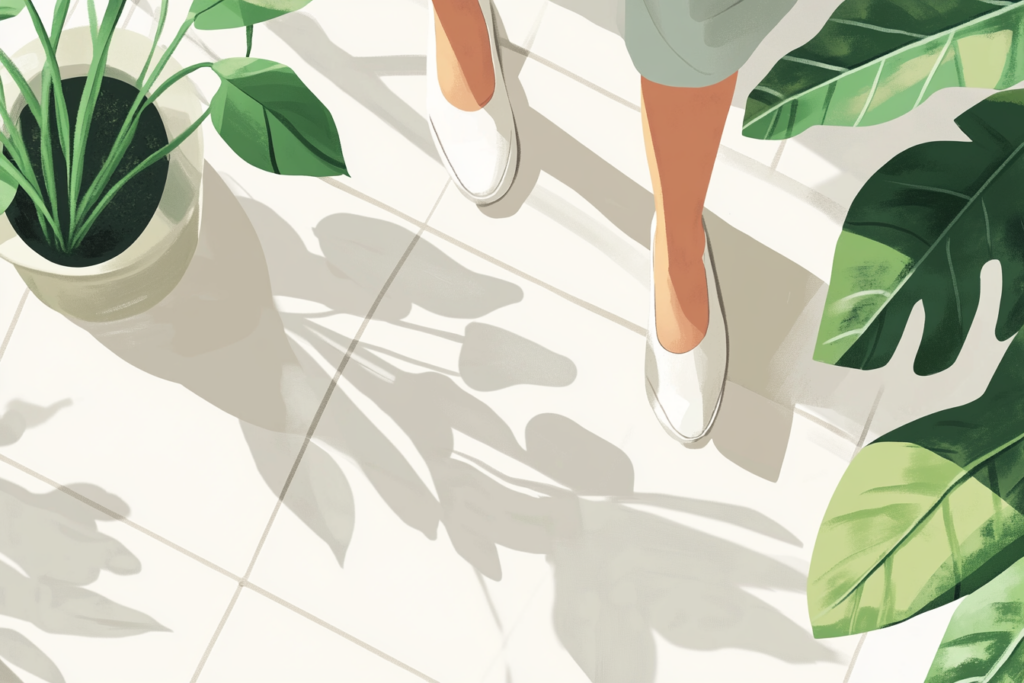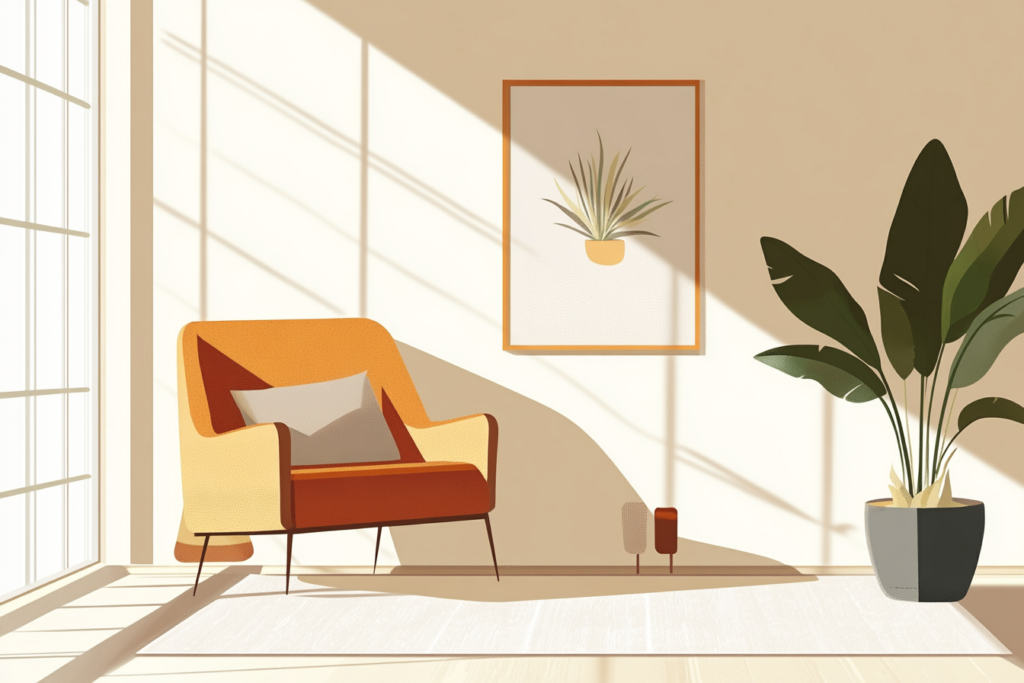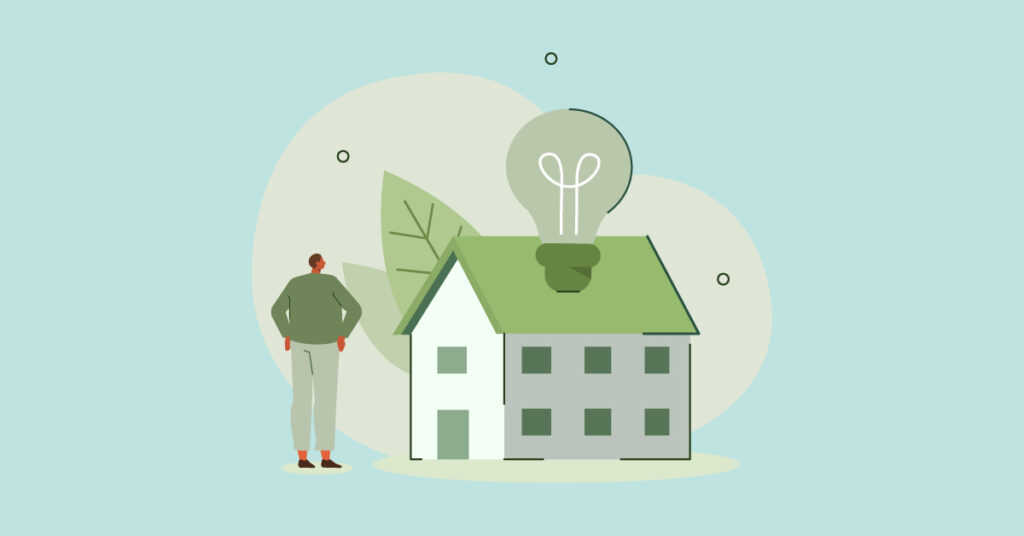When building a new home or breathing new life into an older home, you have lots of choices for building and finishing materials. Your flooring is often what personalizes a space, and you might want to focus on options that won’t create environmental problems down the road. Choosing eco-friendly flooring is a great way to create a beautiful and sustainable home. We’ll take a look at some of the most environmentally friendly options and where these flooring choices make the most sense for your home.
Top Eco-Friendly Flooring Choices

Here are the top eco-friendly options to choose from for your next flooring project.
Bamboo Flooring
Bamboo is one of the most flexible natural fibers out there. It can be used to make everything from fabric to floors, and with its rapid growth cycle — it matures in just three to five years — bamboo is a flooring option that comes with minimal environmental impact. Despite its fast growth, bamboo is exceptionally durable and can withstand heavy foot traffic. According to Green America, it’s 27% harder than northern red oak, making it an environmental and performance improvement over traditional hardwoods.
Cork Flooring
Cork isn’t just to keep your wine bottle closed. It’s a material that is naturally antimicrobial, water-resistant and acts as an insulator. Since cork is harvested from the bark of a tree, leaving the tree to continue growing without harm, it’s a renewable option that can also add noise isolation to your home.
Recycled Glass Tile
Glass is an inert substance that has many uses, and it’s infinitely recyclable. Using recycled glass tile repurposes trash into a treasure. Glass tiles are non-porous, which means there’s nowhere for mold and mildew to hide, and you don’t need to worry about staining. Brighten up a space with reflective glass tiles and finish rooms that are often exposed to moisture.
Reclaimed Hardwood
Hardwood harvested from old growth forests is devastating ecologically, but you can still use it in construction as long as you’re opting for reclaimed hardwood. Sourced from old barns, factories, and other buildings, reclaimed wood doesn’t require any felling. Additionally, it is often harder and more durable than freshly cut hardwood due to its age and exposure to the elements over time.
Linoleum
Linoleum flooring, often mistaken for vinyl, is composed of natural materials like linseed oil, wood flour, and cork dust. It is biodegradable, long-lasting, and naturally antimicrobial, making it a great choice for those looking for durability with a reduced environmental impact.
Engineered Wood
It looks like regular hardwood, but engineered wood flooring uses a lot less hardwood to make each plank. Since a plywood core is covered by a hardwood veneer, you get the look of hardwood in a more sustainable alternative. Its layered construction also makes it more resistant to humidity and temperature changes.
Polished Concrete
For a flooring option that lasts forever and requires almost no maintenance, polished concrete is a great choice. Concrete is a sustainable and recyclable option that can last for centuries. In below grade areas, concrete is already used as the foundation for a home, making it an easy choice to polish for a finished flooring surface. While it’s relatively new as a flooring option, it has rapidly become popular due to its low-maintenance and outstanding durability.
Natural Rubber Flooring
Rubber is a natural material made from the sap of a rubber tree. When used for flooring, it creates a comfortable, cushioned surface that is gentle on joints and helps reduce the risk of injuries during active play. It’s naturally mold-resistant and comes in a wide array of vibrant colors and patterns.
Choosing Flooring Room by Room
Not all room flooring is created equal. Here are a few considerations to keep in mind when choosing the right flooring for particular rooms in your home.
Living Room Flooring
The living room is all about comfort and creating a welcoming environment. It’s also one of the rooms in your home that gets the most traffic since guests and family members tend to gather there. Bamboo, reclaimed hardwood and engineered wood are all great options for stylish, long-lasting, and welcoming flooring. Find one that meets the look and budget you have for your project.
Kitchen and Bathroom Flooring
The kitchen and bathrooms have a few things in common, most notably, water. These are the rooms in your home that have water-using appliances and sinks. That means you need comfortable flooring options that are water-resistant. In the kitchen, cork and linoleum work well, but you might want to upgrade to recycled glass tile for the bathroom. Cork is ideal for kitchens because it offers some cushioning when standing, while glass tiles are better in bathrooms because they are waterproof, not just water-resistant. But, you can use either option in both rooms.
Bedroom and Playroom Flooring
There are eco-conscious carpeting options that may be ideal in bedrooms, but cork is always a great option due to its sound-insulating effect. There’s a reason that studios often use cork, and those benefits extend to your home. Rubber flooring is also ideal for children’s bedrooms or playrooms. It’s easy to clean, comes in lots of fun patterns and colors, and gives a little extra bounce for littles who may fall frequently.
Basements
Many basements have concrete floors, which means polishing is all you need to finish a workable floor. Concrete is already energy-efficient, sustainable and recyclable, so it’s a great building material, and polishing makes it look great, too!
With a wide variety of sustainable flooring options available, it’s easier than ever to create a stylish and eco-conscious home. Whether you are remodeling a single room or updating your entire home, choosing eco-friendly flooring materials can contribute to a healthier planet and a more beautiful living space.
You might also be interested in: Expert Floor Care: 7 Tips for the Cleaning and Maintenance




